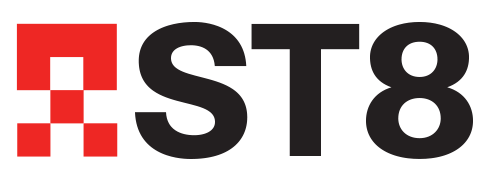You’re sitting at your desk (or maybe somewhere else – we don’t know), and you’re worried about how to best develop your identity online. Creating a digital brand is not easy, especially when consumers are the driving force behind it – along with their ever changing opinions. In today’s rapidly evolving market, you need a brand identity that speaks to your audience on a personal level, while also adhering to your company goals. It must define you. To know whether or not your branding is effective, creative solutions (along with quick feedback) are needed. This is where agile branding can be useful.
Agile branding does a few things:
Promotes Adaptability
Consumers expect the brands they endorse to be flexibly relevant to their needs. Because their needs are always shifting, brands also need to shift to stay relevant. Those that do not are left behind. Remember when Blockbuster was around? We don’t either.
Agile branding promotes this adaptability through quick feedback iterations. Because there are multiple, smaller-scale experiments, consumers give their feedback on the idea much quicker than on an annual large-scale campaign. Listening to the consumers more often allows companies to fine tune their message based on this communication. The back-and-forth interaction creates a personal connection with the audience, ensuring the brand remains a part of their daily lives no matter what channel it is viewed through. In the end, your brand is not for you; it’s for your consumers.
To further stress the need for adaptability, each brand is viewed on the global stage. Seeking out change in one area of the world will inevitably lead to innovation in another, providing the brand content is suited for it. Keeping in touch with your global audience on a regular basis gives the best chance at developing increasingly unique products or services. A good idea is a good idea, no matter where in the world it comes from; just remember to research cultural norms that may impact success in that market region and adapt to fit them.
Demands Consistency
While evolving with the needs of consumers is paramount, remaining true to the core values of the company is of equal importance. Consumers value transparency and firm promises; when brands can deliver on those promises in interesting ways, they are rewarded for it. All touch points must align with the core message, and consumers must be able to recognize that. The tricky part is finding a balance between being adaptable and remaining true to core principles. If a brand goes too far into evolving territory, it risks losing sight of the core message. If it sticks only to rigid rules, it loses out on staying relevant. In essence, this balance is the heart of agile branding.
Requires Authenticity
Many of the top agile brands today are viewed as good citizens. Consumers, especially millennials, deeply value honest Corporate Social Responsibility (CSR) and will know if a business is faking it. Authenticity is extremely important. In order to be a consistent brand, CSR should be woven into the core values and goals of the company; it must clearly connect with the brand in a meaningful way. The best agile brands know this and are continually viewed in a positive light, even when headlines are against them.
Relies on Metrics
Agile branding is not blindly picking straws: Each touch point in the process is backed by research and important metrics from interactions with consumers. All pertinent data from feedback loops are analyzed more frequently than traditional methods; as such, brands are able to update their metrics sooner for a perfect fit. Each brand will need different metrics based on their consumers, but all agile brands create a reliable process to measure relevant data and adapt through it. Because the digital space is always evolving, agile branding makes analyzing metrics a more efficient and useful process – especially since much of the data can change instantly.
Branding content is shaped by the environment it’s in. We can’t exactly predict future environments, but we can be in a position to respond to these changes. When markets change rapidly, an adaptable branding strategy is necessary for thriving. Good agile branding provides the framework to keep your brand relevant while remaining on point with your overall business goals.
If you’re interested in further developing your identity online, give us a call, and we’ll get you there.

